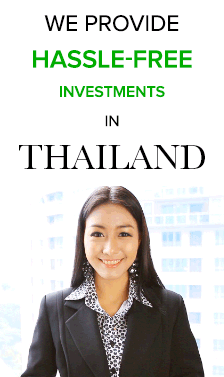Samsung Display plans to invest another $2.5 billion in Vietnam
Samsung Electronics Co Ltd’s display panel subsidiary plans to invest another 3 trillion won ($2.51 billion) in Vietnam to boost capacity, South Korea’s Yonhap News Agency reported on Tuesday, citing unnamed sources.Samsung Display is in talks with Vietnamese authorities about the additional investment, Yonhap reported without elaborating further.
A Samsung Display spokeswoman declined to comment on the Yonhap report. A person familiar with the matter told Reuters separately on Tuesday the South Korean panel maker is considering additional investment in Vietnam but did not comment further including on how much the company plans to spend.
Vietnam is a major smartphone manufacturing base for Samsung Electronics and its subsidiaries, which have already invested billions of dollars in the country.
Source:Reuters
China apparel makers turn to Vietnam for wage relief
Soaring wages at home are prompting Chinese apparel makers to shift production to neighboring Vietnam, where labor costs are nearly 60% lower.Though such moves involve a certain amount of risk due to the nations’ territorial dispute in the South China Sea, among other factors, observers do not see the trend ending anytime soon.Nameson Holdings, which makes sweaters and other knitwear to order, plans to increase production in Vietnam. Based in Huizhou, Guangdong Province, the company began turning out products in the Southeast Asian country in 2015 at a factory in the suburbs of Ho Chi Minh City. It expects to complete the second phase of construction at the plant in April next year.
Nameson mainly supplies garments to Japan’s Fast Retailing, operator of the Uniqlo chain of casual clothing stores. Over half of the Chinese company’s revenue comes from sales to the Japanese retailer. Nameson’s production shift is partly due to a 2009 economic partnership deal that has in principle eliminated tariffs on Vietnamese textile exports to Japan. Nameson is trying to expand its customer base in Japan.China’s Bosideng International Holdings, a major manufacturer and retailer of down jackets, is also boosting output in Vietnam. It currently produces garments on a trial basis at a Vietnamese textile factory affiliated with Japanese trading company Itochu, with which it has a capital partnership. Bosideng will closely monitor the situation at its Vietnam plant and base its expansion moves on developments there.
“Our clients are increasingly looking for a cross-border supply network, and that’s partly why [Bosideng] is missing out on potential orders in original equipment manufacturing(OEM),” said Bosideng Chief Financial Officer Mak Yun Kuen. The shift to Vietnam is intended to cut production costs, he said.
China exports about $169 billion worth of clothing annually. It used to be the unrivaled textile king of Asia. But with wages in China having doubled in the last five years and apparel makers there under heavy pressure from clients to cut costs, companies are increasingly moving production of low value-added goods out of the country.
Setting up operations on foreign shores carries risks, however. In the spring of 2014, Vietnamese protesters gathered for a huge demonstration against China’s oil exploration in the South China Sea. Chinese and Taiwanese companies were targeted by violent protesters, leading to supply chain disruptions.Meanwhile, U.S. President-elect Donald Trump has announced his intention to pull the U.S. out of the Trans-Pacific Partnership, a free trade accord encompassing 12 countries, including Vietnam and Japan. With the future of the agreement looking increasingly murky, the shift of textile production to Vietnam by Chinese businesses wanting to take advantage of lower tariffs may slow.
Source:Nikkei
Number of new firms sets record in 2016 in Vietnam
The number of newly-established firms set a record in 2016, reflecting improvement in business confidence, following the Government’s efforts to boost reform.The latest statistics of the Ministry of Planning and Investment showed that 110,000 new firms were established this year, increasing by more than 16 per cent over the same period last year, also hitting the 100,000 milestone for the first time.
Total registered capital of new firms rose by a whopping 48 per cent.Deputy Minister of Planning and Investment Đặng Huy Đông told vtv.vn that these figures proved that businesses felt more confident in the business climate of Việt Nam.Đông said greater efforts were, however, still needed to improve the business and investment climate, which would remain a priority of the Government.
Việt Nam embarked on a thorough process of improving business climate and national competitiveness in 2014 with the issuance of Government Resolution 19/NQ-CP. The Government has set a goal of having at least one million firms with efficient operation by 2020.The Government is also promoting the entrepreneurship spirit and making Việt Nam a promising startup nation, part of the effort to develop the private economic sector, which has been defined as the driver for socio-economic growth.
A law on supporting small- and medium-sized enterprises is being drafted.Currently, there are more than 500,000 firms in Việt Nam, of which some 97 per cent are small and medium sized.
Sourxe:Vietnam News
No property bubble in Ho Chi Minh City, says association

Above: There will be no real-estate bubble in Ho Chi Minh City in the last quarter of this year.
There will be no real-estate bubble in Ho Chi Minh City in the last quarter of this year, the HCM City Real Estate Association has assured.
Le Hoang Chau, the association’s chairman, said the year-end was always a time of growth for the market and this year was no different.
But the market was showing signs of slowing down compared to last year, and this would continue into 2017, he said.
He dismissed fears of a bubble, saying it would only form in a rapidly growing economy.

Above: The economy is still in recovery mode.
“This year it is difficult to achieve the country’s GDP growth target of 6.7 per cent. Our economy is still in recovery mode.”
Furthermore, credit policies were being tightened, he said.
But there was a risk in the high-end segment due to an imbalance between demand and supply, he said.
The association’s latest report clearly reveals this imbalance. With a mushrooming of high-end projects, supply exceeded demand, it said.
On the other hand, there was a shortage in the segments in which there was high demand – social housing and housing costing 15 million dong (Bt23,277) per square metre.

Above: The property market had recently seen a slight increase in prices in many projects.
The association said high-end projects were now proliferating not only in the city centre but also elsewhere, especially in the east.
“The government should have policies to balance the market and developers should restructure their projects, moving into segments with real demand and high sales.
“Consumers should decide carefully and not just follow trends.”
The market had recently seen a slight increase in prices in many projects, but it was a normal trend during the year-end, traders said.
Prices were up by 1 million dong to 3 million dong per square metre, they said.
Brokers said prices were up compared to the rates initially offered by developers at many projects like Centana, Palm City, Moonlight Residences and Hung Phat Silver Star.

Above: The association said high-end projects were now proliferating not only in the city centre but also elsewhere, especially in the east.
Nguyen Van Duc, deputy director of brokerage Dat Lanh, said prices were now up by 5 to 15 per cent. They are mostly mid-end projects by prestigious developers at good locations that have made good construction progress.
According to Duc, prices have increased most in the east and south where transportation is excellent.
Source: The Nation
Thailand DBD expects more investments in e-commerce business in Thailand
In 2016, the Foreign Business Commission allowed 352 foreign investors to operate their businesses in Thailand, down by 13 percent compared to 2015, as investors remained concerned over the global economy’s sluggish recovery momentum.
The value of foreign investments in 2016 amounted to 7.443 billion baht.The Department of Business Development (DBD) predicted that more foreign investors will be interested in investing in e-commerce businesses in 2017.
DBD Director General Banchongchit Angsusing disclosed that it is expected that more foreign investors will invest in e-commerce business this year thanks to the government’s Thailand 4.0 policy, which focuses on the use of innovation, technology, and creativity in doing businesses relying on electronic channels.
Source:pattayamail








